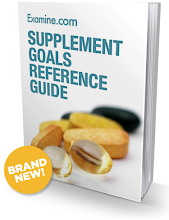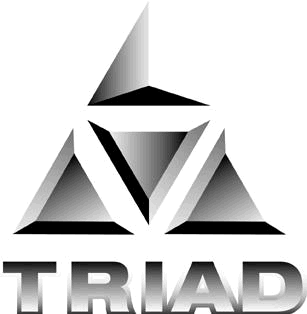Not Conducive to Bustin' Out a Heavy Fran
Achy knees. Creeky elbows. Stiff shoulders. Old hat for the athlete giving it his/her all every week.
But should it be? Is it "Par for the course", or is it preventable? Through a number of methods, perhaps. This article will briefly outline some common OTC (over-the-counter) supplements that are specific to the treatment and prevention of skeletal joint issues.
Sports and osteoarthritis.
Department of Orthopaedics and Rehabilitation, University of Iowa Hospitals and Clinics, Iowa City, Iowa 52242, USA. joseph-buckwalter@uiowa.edu
PURPOSE OF REVIEW: Participation in sports improves general health but increases the risk of osteoarthritis. This review analyzes the relationships among increased joint use, joint injuries, and injury-induced joint degeneration that causes posttraumatic osteoarthritis. The purpose is to help people who participate in sports minimize their risk of joint degeneration. RECENT FINDINGS: Participation in sports that cause minimal joint impact and torsional loading by people with normal joints and neuromuscular function may cause osteophyte formation, but it has minimal, if any, effect on the risk of osteoarthritis. In contrast, participation in sports that subject joints to high levels of impact and torsional loading increases the risk of injury-induced joint degeneration. People with abnormal joint anatomy or alignment, previous joint injury or surgery, osteoarthritis, joint instability, articular surface incongruity or dysplasia, disturbances of joint or muscle innervation, or inadequate muscle strength have increased risk of joint damage during participation in athletics. SUMMARY: Gaining the benefits of participation in athletics while minimizing the risk of osteoarthritis requires understanding of the relationships between sports participation and joint injury and the relationships between joint injury and joint degeneration. People who wish to participate in sports should have an evaluation of their joint structure and function, muscle strength, and neuromuscular function, and people with a history of joint injury or mild osteoarthritis should select sports that have limited risk of accelerating joint degeneration. Copyright 2004 Lippincott Williams & Wilkins
PMID: 15314507 [PubMed - indexed for MEDLINE]
So did we need a study to determine that high-intensity activity coupled with either previous injury or muscular imbalance could cause increased risk of joint damage? Nope, that's pretty much a given fact of life. In a later post I'm going to go into into injury reduction more. But this one is for the dudes already hurtin'
Some quick definitions:
Osteoarthritis: (OA) In osteoarthritis, the cushioning (cartilage) between the bones wears away in the joints. As osteoarthritis gets worse, the cartilage disappears and bone rubs on bone. Bony spurs or growths usually form around the joint. The ligaments and muscles around the joint loosen and become weaker.Often, the cause of OA is unknown. It is mainly related to aging, but other factors can also lead to OA.
Osteophyte: also known as bone spurs, are bony projections that usually form along joints.
Ok, onto the supps:
Triple Whammy
Glucosamine
The rational for supplementing with glucosamine sulfate is that a deficiency, either through aging or genetics, has occurred in the endogenous production; adding an OTC supplement will potentially boost natural production.
Res Sports Med. 2007 Apr-Jun;15(2):113-24.
Glucosamine administration in athletes: effects on recovery of acute knee injury.
Institute of Sports Medicine, Sports Academy, Belgrade, Serbia. sergej@panet.co.yu
The main aim of this study was to examine the effects of 4 weeks of glucosamine administration on the functional ability and the degree of pain intensity in competitive male athletes after acute knee injury. This study was a randomized, double-blind parallel trial of glucosamine (1500 mg per day) or a placebo for 28 days, utilising 106 patients with an acute knee injury. Pain and functional ability were evaluated at the beginning of the study and at 7, 14, 21, and 28 days after starting treatment. Pain intensity at rest and while walking was assessed using a visual analog scale. Passive knee flexibility (flexion and extension) of the injured limb was measured using a modified goniometer, and the degree of knee swelling was measured and compared with the noninjured limb. No significant difference was found between the glucosamine, and placebo group in mean pain intensity scores for resting and walking, and degree of knee swelling at the 7-day, 14-day, 21-day, and 28-day assessment. There was no significant difference between passive knee flexibility at the 7-day, 14-day, and 21-day assessment. After 28 days of treatment the patients from the glucosamine group demonstrated significant improvement in knee flexion and extension as compared with the placebo group.
Chondroitin
Chondroitin is a glycosaminoglycan, similar in function and structure to glucosamine; it is found in the articular cartilage of skeletal joints. In addition to serving as a hydrophilic polymer (Water finds it VERY sexy, like the screaming hoards of readers of this blog find me), it also has a couple of other interesting functions: in inhibits the enzymatic breakdown of cartilage (and potentially helps rebuild it), and plays a role in the secretion and creation of synovial fluid. Think of a lack of synovial fluid like running a car without oil---metal on metal = serious friction and wear. Same thing with a skeletal joint. Lack of lubricating fluid = erosive osteoarthritis. Both chondrotin and glucosamine may work together synergistically to enhance secretion of synovial fluid.
MSM. It ain't "The Sh*t"
MSM
MSM, or methylsulfonylmethane, is an organic sulfur compound found naturally occurring in fruits and vegetables. A different form, DMSO, gained popularity years ago for it's purported health benefits---everything from snoring to gout to cystitis (bladder infections) to osteoarthritis. The main mechanism of action is anti-inflammatory, and most studies that have trialed MSM have been based on subjective quality of pain control---keep in mind this has nothing to do with regeneration of cartilage or inhibition of cartilage degradation. Results, at best, are mixed and subjective, but manufacturers usually add it to joint support formulas.Meta-analysis of the Related Nutritional Supplements Dimethyl Sulfoxide and Methylsulfonylmethane in the Treatment of Osteoarthritis of the Knee.
Aldermoor Health Centre, Aldermoor Close, Southampton, Hampshire, SO16 5ST, UK. s.brien@southampton.ac.uk.
Dimethyl sulphoxide and methylsulfonylmethane are two related nutritional supplements used for symptomatic relief of osteoarthritis (OA). We conducted a meta-analysis to evaluate their efficacy in reducing pain associated with OA. Randomized or quasi-randomized controlled trials (RCTs), identified by systematic electronic searches, citation tracking and searches of clinical trial registries, assessing these supplements in osteoarthritis of any joint were considered for inclusion. Meta-analysis, based on difference in mean pain related outcomes between treatment and comparator groups, was carried out based on a random effect model. Seven potential trials were identified of which three RCTs, two DMSO and one MSM (total N = 326 patients) were eligible for inclusion. All three trials were considered high methodological quality. A significant degree of heterogeneity (chi(2) = 6.28, P = 0.043) was revealed. Two studies demonstrated statistically significant (but not clinically relevant) reduction in pain compared with controls; with one showing no group difference. The meta-analysis confirmed a non significant reduction of pain on visual analogue scale of 6.34 mm (SE = 3.49, 95% CI, -0.49, 13.17). The overall effect size of 1.82 was neither statistically nor clinically significant. Current evidence suggests DMSO and MSM are not clinically effective in the reduction of pain in the treatment of OA. No definitive conclusions can currently be drawn from the data due to the mixed findings and the use of inadequate dosing periods.
PMID: 19474240 [PubMed - as supplied by publisher]
So, Does This Stuff Work?
Well, lets look at it like this: the GAIT (Glucosamine/Chondroitin Arthritis Intervention Trial), which was a 12.5 million dollar study of over 1500 patients, found 67% relief of OA with glucosamine/chondrotin, and 70% with the prescription NSAID, Celebrex. I'll leave you with that to chew on.
So, Should I Take This Stuff, Mike?
I can't answer that! If you're an athlete over 35 that's had a previous injury, it's something to consider; if your a 17 year old female volleyball player, I'd ignore this post and ask your coach to teach you to power clean. See what I'm getting at? It's specific to the individual, but a certain subset of folks might be nodding their heads at home right now. This post is just an info-teaser, if you will, for you to look further into it.
How Much Should I Take?
Dosing may vary based on what brand you buy, but in the GAIT trial, doses used were 1500mg of glucosamine and 1200mg of chondroitin, so I think it'd be prudent to start at that. One must consider that relief may not be noticeable for AT LEAST 4 weeks, and in some patients, no relief at all---if you have an acute injury, aren't over 40, and don't have a reduction in synovial fluid or the beginnings of osetoarthritis, these supplements may prove useless to you. Caveat Emptor.I hope this answers a few questions for folks, and even more so, stimulates the desire to investigate further.
Just a heads-up: I won't be posting much over the next few weeks; I have surface ice rescue training this week, then I'm heading to a much more comfortable area of the world (called the Caribbean!)...then when I get back I have a week of fire recruit testing and interviewing, and then I'm off to Sunnyvale, California, for the Putting It All Together: Combining Weightlifting, Powerlifting, Gymnastics, and GPP to Work for You Seminar at Catalyst Athletics in Sunnyvale, California.
Life is good. :)

























